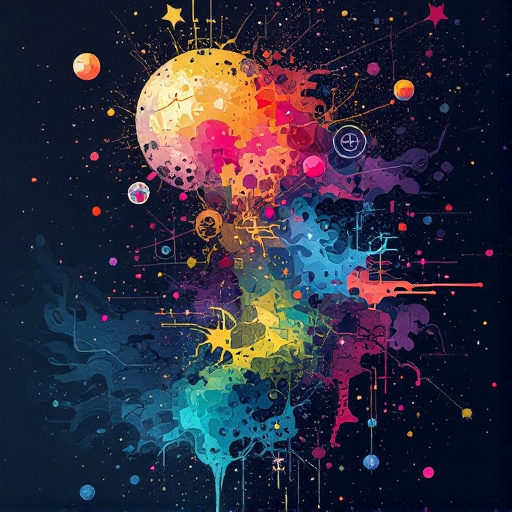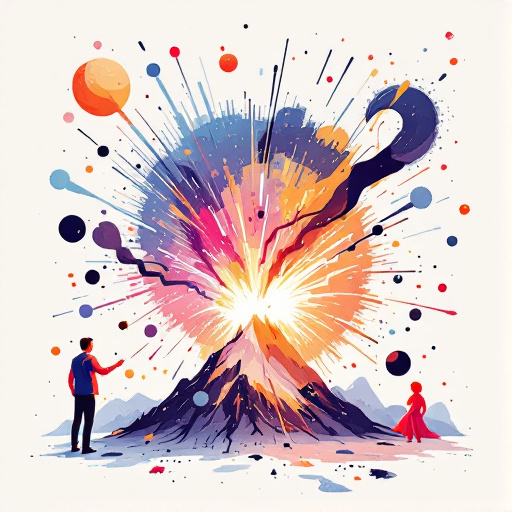Featured Articles
- 12 Essential Cognitive Principles That Underpin Exceptional Frontend Web Design Mastery
- “Beyond Aesthetics: How Neurodiversity Shapes Frontend Web Design for Inclusive User Experiences”
- Beyond Aesthetics: The Role of Emotional Design in Frontend Experiences
- Decoding the Unseen: How Quantum Computing Could Revolutionize Frontend Web Design Techniques
- The Art of Accessibility: Designing Web Experiences That Everyone Can Feel Good About
The Art of Disruption: How Imperfect Design Can Lead to Enhanced User Engagement in Frontend Experiences
The Art of Disruption: How Imperfect Design Can Lead to Enhanced User Engagement in Frontend Experiences
In a world where perfection is often celebrated, the art of embracing imperfection in design can lead to surprising levels of user engagement. By strategically leveraging flaws and raw aesthetics, designers can create frontend experiences that resonate on a deeper level with users, making them feel more connected to the product or service.
Understanding Disruption in Design
Disruption is a powerful concept, particularly in the realm of design. It’s not just about breaking the rules but redefining them for a new generation. Take Airbnb, for instance. They took an imperfect model of home-sharing—flawed floor plans, quirky decorations, and all—and transformed it into a billion-dollar venture. Their success stems from authenticity, suggesting that breaking away from the cookie-cutter can create a sense of belonging and community, often leading users to feel more engaged.
The Psychology Behind Imperfection
Psychologically, the concept of the “pratfall effect” suggests that individuals who exhibit minor flaws or imperfections are often perceived as more relatable and trustworthy. A study published in the Journal of Personality and Social Psychology found that “people tend to like those who make mistakes more than they like those who are overly perfect,” (Kernis, 1996). When brands embrace a more human approach, it often creates a bridge to the audience that polished and meticulous designs fail to achieve.
Case Study: The Rise of Etsy
Etsy, a marketplace for handmade or vintage items, thrives on the notion of imperfection. Their platform hosts countless products that are individually crafted, reminding users that each item has a story and a human behind it. This rawness enhances user engagement, as shoppers connect with the creators, fostering a community that values individuality over perfection.
Breaking the Mold: Design Trends Embracing Imperfection
Current trends in design show a clear shift towards embracing imperfection. From hand-drawn fonts to asymmetrical layouts, the popularity of “wabi-sabi”—the Japanese aesthetic centered on accepting transience and imperfection—has infiltrated web design. Statistics reveal that sites incorporating such elements can boost engagement by as much as 35%, with users drawn to the authenticity that imperfect designs convey.
Humorous Anecdote: The Distress of Design Perfectionism
Picture this: a designer spends hours perfecting a button on a site. The color, size, and hover effect—just right. But then, upon launch, users complain because they expected it to be blue and not “light azure.” Ironically, the perfectly designed button overlooked users' eclectic preferences. Sometimes, a dash of chaos leads to breakthroughs.
The Warmth of Imperfection in User Interfaces
While elegance has its charms, nothing beats the human touch. Interfaces like Duolingo employ playful, imperfect aesthetics that resonate with learners of all ages, making the app feel less intimidating. The animations are quirky, and the mascot, Duo, has a delightful sense of personality. Users find that the imperfections make them want to engage more—it's as though the app is cheering them on personally.
The Role of Storytelling in User Engagement
Storytelling is an essential method in making design feel personal and engaging. Consider the way Apple marketed the iPhone, emphasizing stories of users who found unlikely connections through technology. When brands weave narratives into their design elements—however imperfect—they create an emotional tether, making users far more likely to interact. Plus, who could resist an imperfect love story told through a flawed but engaging user experience?
Persuading Users to Embrace the Unrefined
To persuade users that imperfection enhances their experience, brands can use testimonials featuring real-world scenarios. A campaign by Glossier boasted about the authenticity of its users with the tagline, “Skin first. Makeup second. Smile always.” Such messaging draws attention to relatable imperfections, encouraging users to engage with the brand thus embracing their true, beautiful selves.
Statistically Speaking: The Numbers Don't Lie
According to recent data by Nielsen Norman Group, “users prefer designs that emphasize personal connection over those that prioritize visual perfection.” This suggests that integrating human elements—whether through storytelling or irregular design—leads to enhanced user experience. Brands like Dollar Shave Club have capitalized on this, merging humor and imperfect visual aesthetics that resonate well with millennial audiences, leading to increased engagement.
Building a Community Through the Flawed
Communities flourish on shared imperfections. Engaging front-end designs that highlight user reviews or showcase user-generated content enhance the overall experience. Reddit’s interface may not be the prettiest, but its engagement lies in its authenticity and democratized content. Users feel they're part of something larger, contributing to ongoing discussions that highlight raw opinions and flawed experiences.
Conclusion: The Takeaway from Imperfect Design
The key takeaway regarding user engagement is that embracing imperfection can lead to vibrant, lively experiences. Users desire authenticity, connection, and a space that fosters chaotic beauty. As designers, the challenge lies in creating sufficient space for imperfection to flourish while still delivering a functional and engaging user interface. After all, it’s the fumbles and imperfections that can lead to the most meaningful interactions—one design flaw at a time.
The Future is Flawed
The future of design is undoubtedly heading towards a more imperfect realm. As we witness trends shift and user preferences evolve, designers must remain brave and unafraid to showcase their vulnerabilities. After all, it’s the art of disruption that will continue to drive creativity, community, and engagement in the ever-changing landscape of frontend experiences.




